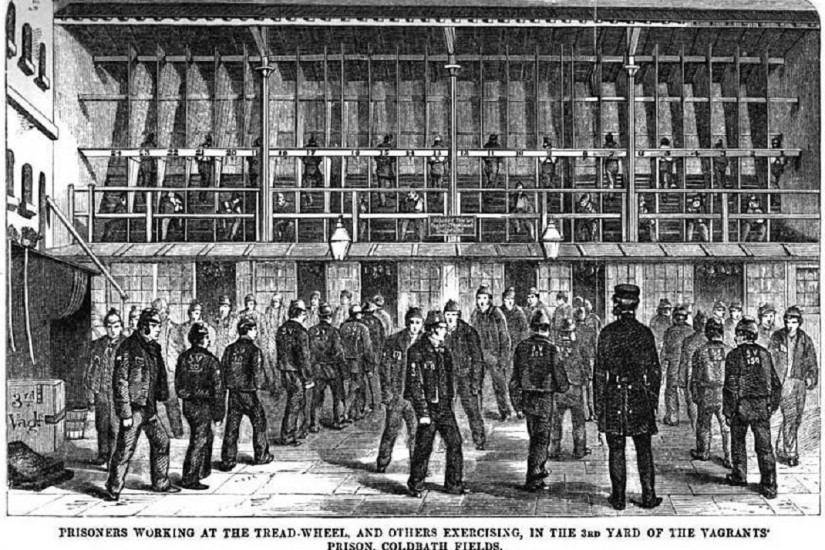If you are one of the 51.8 million people in the U.S. who use a treadmill for exercise, you know there’s much pain for your muscle-and-fitness gain. On your next 30-minute jog, as you count down the final seconds, ponder whether the hard work made you a better person. Consider whether the workout would feel different if you had powered something, even a fan to cool yourself off.
Two hundred years ago, the treadmill was invented in England as a prison rehabilitation device. It was meant to cause the incarcerated to suffer and learn from their sweat. It would mill a bit of corn or pump some water as a bonus.
William Cubitt, a civil engineer raised in a family of millwrights, created the treadmill—which was also called a treadwheel in the early days—in 1818. Cubitt later became famous for overseeing the construction of The Crystal Palace in London in 1851, and was knighted by Queen Victoria for his efforts. Cubitt’s early attempts at the treadmill’s design took many forms, including two wheels you walked on whose cogs interlocked. But his most popular edition, which was installed at Brixton Prison in London, involved a wide wheel. Prisoners pressed down with their feet on steps embedded in the wheel, which moved it, presenting them with the next step. Picture it like the sport of log-rolling, only the log-like wheel was fixed in place. The Brixton treadmill was hooked up to subterranean machinery that ground corn. It wasn’t fun.
This treadmill could busy as many as 24 prisoners, standing side-by-side along the wheel. Some devices at other prisons were smaller, and most treadmills soon included partitions so convicts could not socialize. They slogged for 10 hours a day in summer, and a mere seven in winter.
The invention arrived at an apt time. At the end of the eighteenth century, the British began reforming their prisons. According to the historian U. R. Q. Henriques’ 1972 article “The Rise and Decline of the Separate System of Prison Discipline,” prisons previously offered their occupants next to nothing. Families had to bring in food and blankets, and the bribing of guards was rampant. As prisons began providing necessities, people worried that the poor would commit crimes just to get free stuff. Such luxuries needed to be offset by labor—ideally, labor that was painful and possibly even pointless.
